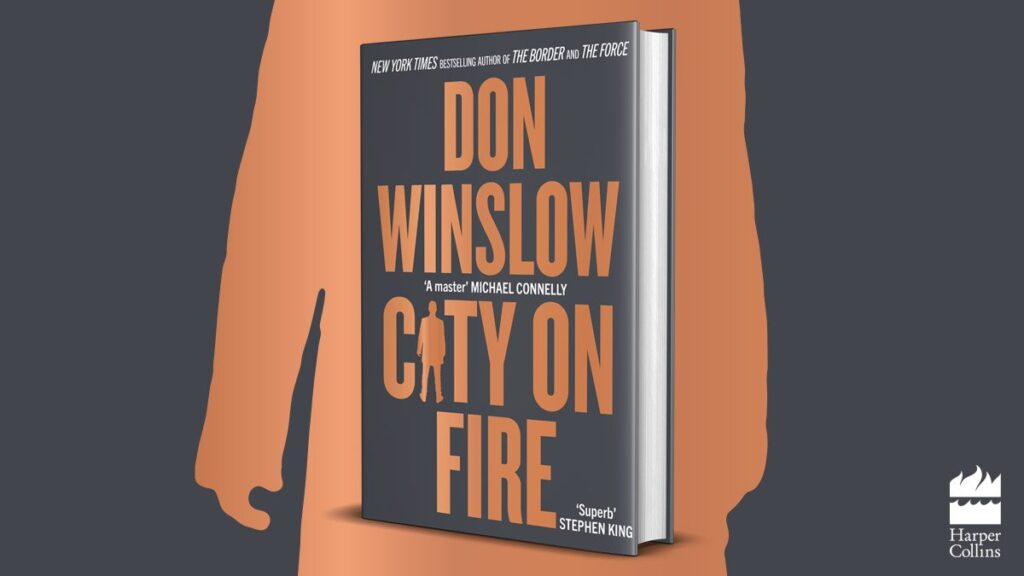As well as being our featured reviewer this week, as Gareth has written in with such a detailed review of Lucifer’s Tears, we thought that we’d give it its very own blog post!
 Name: Gareth Rice
Name: Gareth Rice
Occupation: University Researcher and freelance writer
Best detective/good guy: John Rebus/Dr. Gill Grissom Favourite place to read: Anywhere really but I prefer cafes that have a quiet hum or, my top floor apartment with a stunning vista of the city.
Anything else you want to tell us? Reading crime fiction has taught me a lot about my own psychology and obsessions…
Review of Lucifer’s Tears
With its cold landscapes a perfect setting for grisly tales of murder, ‘Scandinavin noir’ has been the inescapable genre of recent years. When reviewers search for a ‘Scandinavin noir’ icon they tend to come up with writers, such as Jo Nesbø, Henning Mankell, Ilkka Remes, Matti Joensuu and, more recently, Stieg Larsson. Enter Lucifer’s Tears, James Thompson’s second Inspector Kari Vaara novel which is a full-hearted stab at a sequel with more than an invigorating whiff of its brilliant predecessor, Snow Angels. The purgatorial sounding title comes from the first chapter, in which Vaara reflects on his home: “Finland. The ninth and innermost circle of hell. A frozen lake of blood and guilt formed from Lucifer’s tears, turned to ice by the flapping of his leathery wings.”
We join Vaara in Helsinki where he has moved to from his home in the remote Finnish north because his wife, Kate, was offered an opportunity to advance her career in the most upmarket hotel in the capital. It’s not long before Vaara and his sidekick, Milo, “a nervous puppy…who needs a firm hand to guide him”, are dispatched to investigate a crime scene in the residential district of Töölö. They are faced with what seems like an open and shut case: the nude, dead body of a young woman, Iisa Fillipov, the wife of the Russian businessman Ivan Fillipov. She has been sadistically tortured. Her skin is marked with cigarette burns and she has been whipped viciously with a riding crop, and ultimately asphyxiated. Iisa’s lover, an Estonian man called Rein Saar, woke up beside her in bed covered in her blood. Vaara is reluctant to arrest Saar and be done with it, contra his boss’s, Jyri Ivalo, suggestion. This marks the start of well paced interwoven plot lines that never feels padded out, and make it difficult to gulp back the keenness to read on.
The historical plot line never relies too heavily on the reader’s knowledge of Finland to shoulder the bulk of the work. The pushy Ivalo wants Vaara to use his dead grandfather’s relationship with a ninety year old man, Arvid Lahtinen, who is the last surviving member of the Valpo (Finnish secret police), which was tied to a Nazi extermination camp located within the borders of Finland during WWII. Lahtinen is wanted by the Germans for war crimes. As Vaara drives his Saab between Helsinki and Porvoo to smoke out Lahtinen, his qualification to be in the homicide department (murharyhmä) meanwhile comes under question by his colleagues. On top of this, the visit of Kate’s brother, John, a drug user and alcoholic, and sister, Mary, a right-wing religious nut job, adds pressure to Vaara’s domestic life. Thompson neatly uses their visit to explore some of the main cultural differences between American and Finnish society, while at the same time making it obvious that Vaara is concerned, above all, that the added stress will cause Kate to miscarriage again after she lost their twins about a year ago.
As we learn more about Vaara’s social personae and psyche, readers may be tempted to draw parallels with Nesbø’s Harry Hole or Ian Rankin’s Inspector Rebus (who also drives a Saab) but, Vaara is sui generis. It is clear that Thompson is less interested in some borrowed caricature than guiding us through the plot by breaking Vaara down into his component parts: a deeply moral man who is incorruptible, a doting husband, a tough cop with no time for wise guys – like the one who stole John’s boots and left him in the snow – or his crafty boss. Vaara also has deep psychological scars from the previous Sufia Elmi murder case, chronic insomnia and a constant migraine that, contra characters like Bruce Robertson from Irvine Welsh’s Filth, never becomes an overpowering narrative device. And if the story arc is familiar to avid readers of noir, they will discover that Thompson has managed to eschew obvious genre clichés and extreme predictability like the protagonist being an obvious shadow of his former self.
Thompson’s particular blend of melancholic dialogue and dark humour is highlighted through Vaara’s verbal duelling with Ivan Fillipov, Jyri Ivalo and John, his brother in-law, who, despite being a nightmare, the Inspector insists on seeing him as “a decent sort.” All the while, the potential for Vaara to erupt bubbles beneath the surface and there is a hint of this when he comes face to face with the arrogant “lank-haired grease ball” who stole John’s boots. After Vaara’s calm approach to retrieve the boots is laughed off, he holds up a pint glass and squeezes it until it goes off like a bomb and shatters in the greaseball’s face. This lifts him out of the “amateur detective” tradition, whereby characters don’t handle potentially violent situations with the same level of confidence when compared with more experienced Inspectors.
Through Vaara’s reflections on the world around him, we learn that his boundless desire to protect others sits uneasily with his frustration at not being able to make a positive difference to everyone he has touched, including the pathetic school shooter who Milo capped. Thompson uses this to sustain an internal tension within Vaara, who is also haunted and guilt ridden by images of his dead sister, son, ex-wife and his cat, who choked to death on a rubber band, and Sufia Elmi, his previous murder case from up north. He feels somehow responsible for all of them and now he has the Iisa Filioppov case to crack.
Despite the bleak setting of Lucifer’s Tears, the supporting characters give off enough light to make them interesting and their trajectories feel aptly paced in relation to one another. However, more faint hearted readers may not enjoy having their eyeballs branded with the very realistic descriptions of the Töölö crime scene but, a conversation with the author revealed that this is testament to his impeccable research skills, and a clinical eye for fine grained details, to say nothing of the virtuosity of his prose. As Vaara pieces together exactly what happened in that Töölö apartment and continues to visit Lahtinen in Porvoo, we are plunged into a world of kinky sex, murder, adultery, police corruption and some Finnish history too. As the plot lines twist and turn, the juices of wonder will be secreted in readers’ brains right to the end.
Dr. Gareth Rice
Helsinki, Finland.


